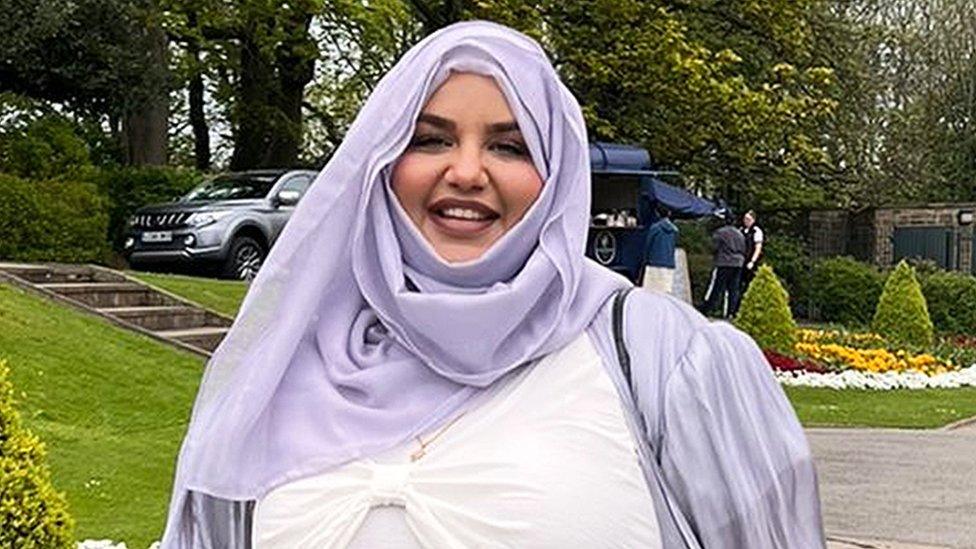Tattoos reveal the stories of the partition of British India
- Published
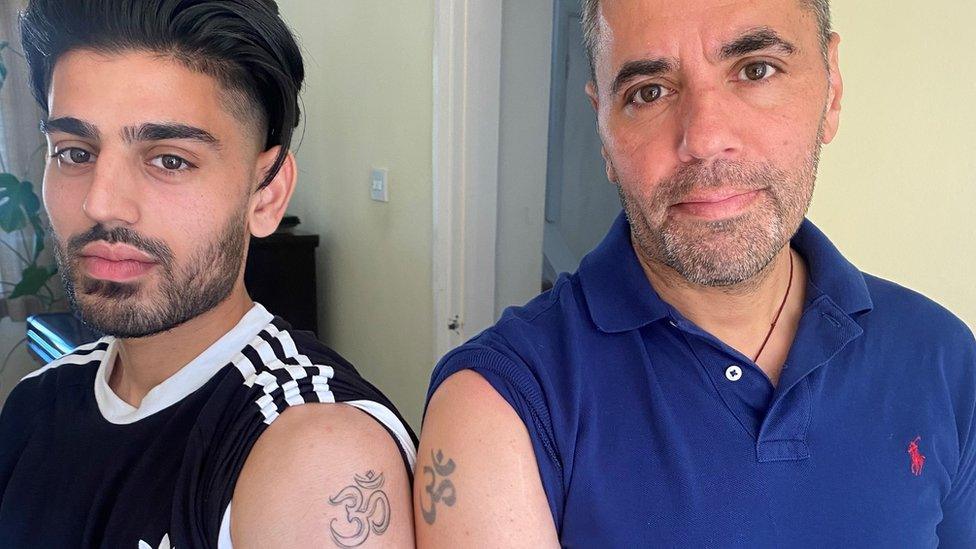
Vimal Korpal and his son Ettan have matching tattoos of a religious symbol
Seventy five years on since the partition of British India into two independent states, some elderly survivors are reminded of the conflict, through the symbolic and religious tattoos which saved their lives.
About 12 million people were displaced and up to a million lives were lost.
India was split into religious lines, Muslims on one side in Pakistan with Sikhs and Hindus on the other.
It is one of the biggest movement of people the world has ever seen. During partition, some South Asian families would have their names, symbolic or religious tattoos in the same place so they could be identified in the chaos.
Another purpose was to easily prove religious identity so they could be accepted onto the right side of the border.
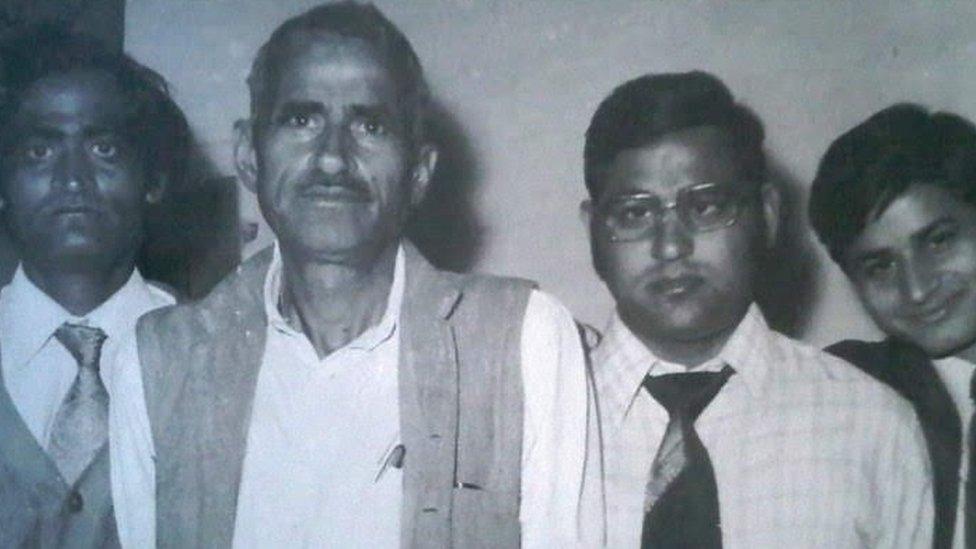
Vimal Korpal's uncle on the far left had his tattoo since he was a child
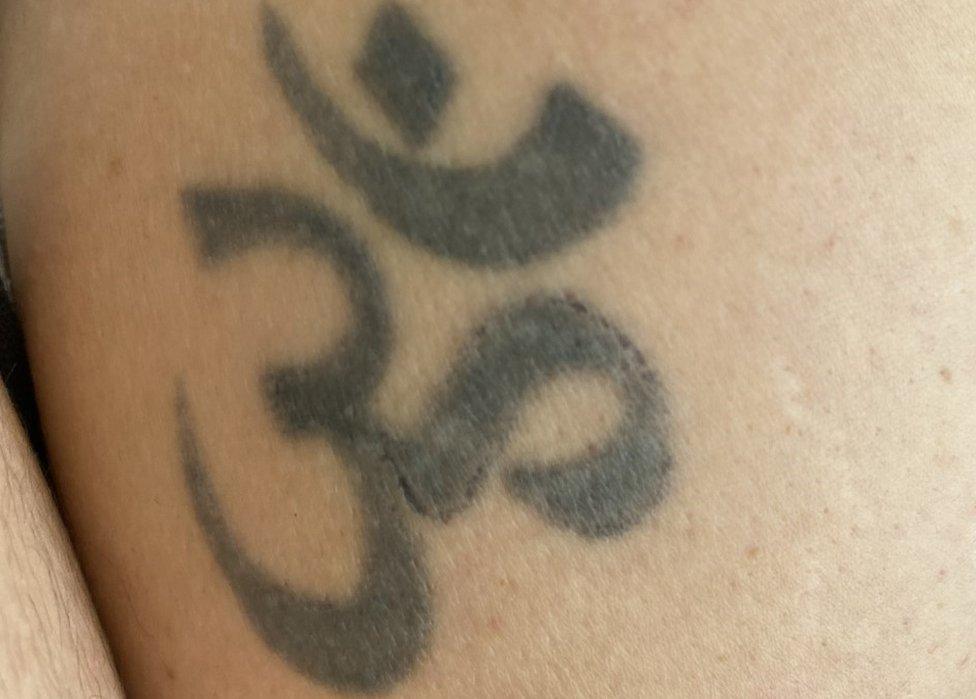
Vimal Korpal got a tattoo of a religious symbol before he knew his uncle had the same one from 1947
Over two decades ago Vimal Korpal, from Birmingham, got a tattoo of the religious Hindu symbol. Little did he know then that in 1947 his uncle had one just like it.
"My parents weren't happy about it at first, but then I said 'mum it's the OM sign'.
"She then mentioned my uncle had one similar as well as his name tattooed on his arm," Mr Korpal said.
'Identification and survival'
This led him to delve deeper into his past and uncover the stories behind the tattoo. After speaking to elders in his family, he found out these tattoos were all about identification and survival.
"My uncle didn't have a choice, he didn't realise why he had it as a child but his dad just made him," Mr Korpal said.
"The tattoo was done before the partition at one of these melas. There was a bowl of ink, a bamboo stick gets dipped in and it pierced his skin," he added.
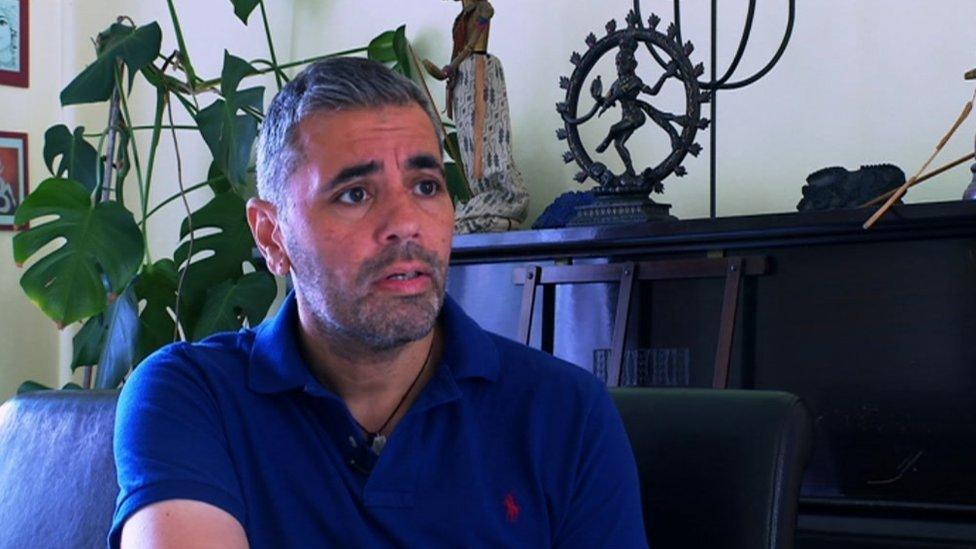
Vimal Korpal delved deeper into his past about the partition of British India
Shalina Patel is one of a handful of history teachers who teach about the partition of India to secondary school pupils.
"Some people during partition had symbols like a bird or a star, others had their names or religious symbols.
"They felt like they needed to identify their religion easily in fear that they might be questioned about it," she said.
'Violence'
During her time studying the horrors of partition, Ms Patel discovered women were often specifically targeted with violence.
Tens of thousands of women were abducted during the partition of India. The abductions took place across all three religions, Hindus, Sikhs and Muslims. Women were raped, forced into prostitution and made to convert their religion to their attackers.
As a result, they were sometimes tattooed with religious and cultural slogans of their attackers, such as long live India or long live Pakistan.
Eighty-nine-year-old Bimla Devi was a teenager when she was told to leave Pakistan for India.

Bimla Devi fled Pakistan and hid in a neighbours chimney
She said within days love between different South Asian religions turn to hatred.
Mobs would come knocking on doors on both sides of the borders killing anyone who was not their own.
But amid the horrors were heroes.
"Our neighbours were Pakistani. They were very kind. They hid me. There was a big fireplace and they pushed me in and put something in front of me. I stayed in their chimney," Mrs Devi said.
"They saved my life," she added.
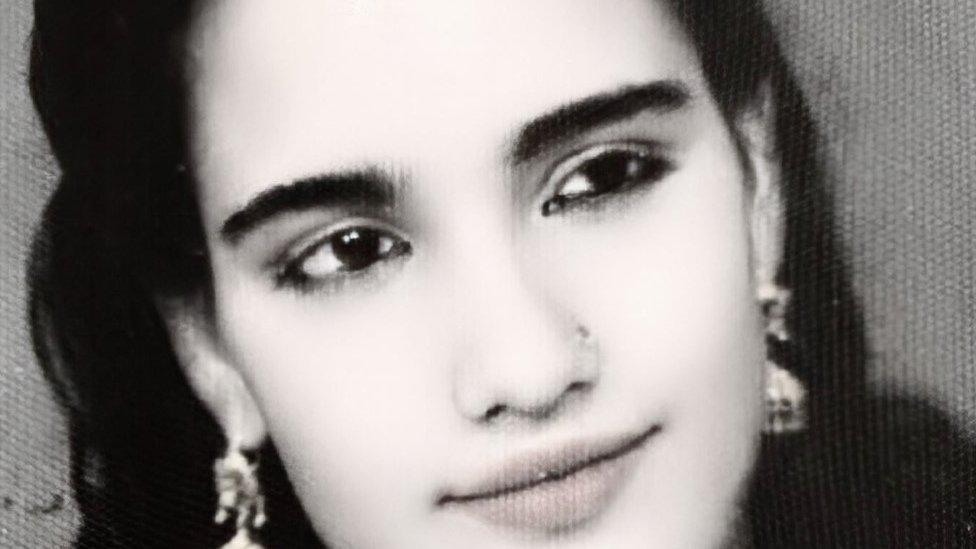
Bimla Devi was a teenager when she was told to leave Pakistan
Once it was safe for her to leave her neighbours' house, Mrs Devi and her family travelled for three days by foot, lorry and train without any food or water.
Along the way they escaped brutal massacres and violence.
Her younger sister did not survive the journey.
She came to England in the 1950s from the Punjab to begin a new life with her husband and children.
'Horrific time'
Ali Arif's grandmother was ten years old when she fled India for Karachi, Pakistan.
She moved with her family including ten siblings. She was sad to leave her home behind, but at the same time she felt relieved when she arrived in Pakistan.
It is a bloody and horrific time in history which many survivors still find it hard to talk about, especially with their family members born in the UK.
Mr Arif, who is originally from Leicester and now works in London, is part of the next generation talking and learning about his grandmother's experiences to keep the legacy of partition alive among younger generations.
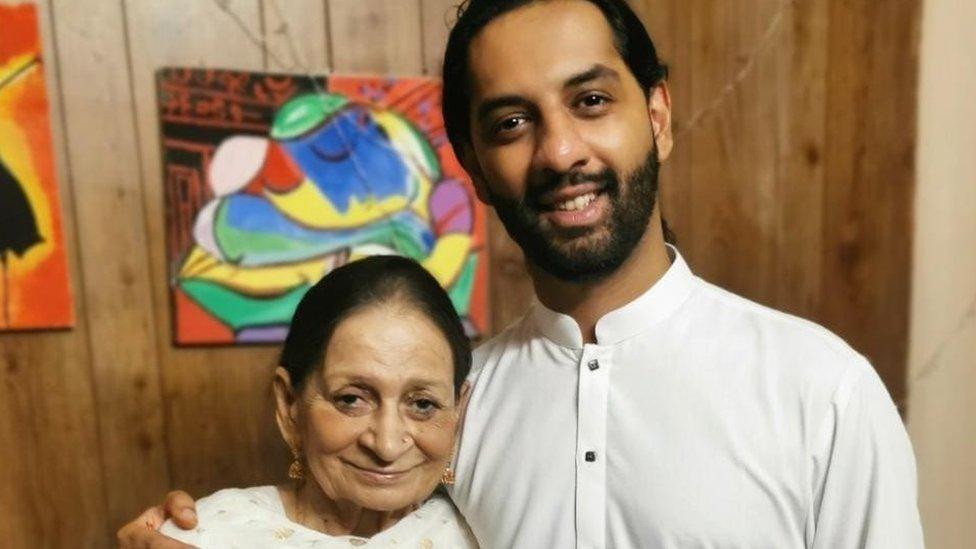
Ali Arif with his Nani - she is still alive and lives in Pakistan
"A couple of generations later when we ask them what happened they're happy to talk about it.
"It does live on and our elders seem like they want to tell it and make sure they are recorded and their memories are kept alive," Mr Arif said.
The tattoos on partition survivors may be fading, but the next generation are inspired to keep the stories of partition alive.

Follow BBC West Midlands on Facebook, external, Twitter, external and Instagram, external. Send your story ideas to: newsonline.westmidlands@bbc.co.uk, external
Related topics
- Published15 August 2022

- Published15 August 2022
